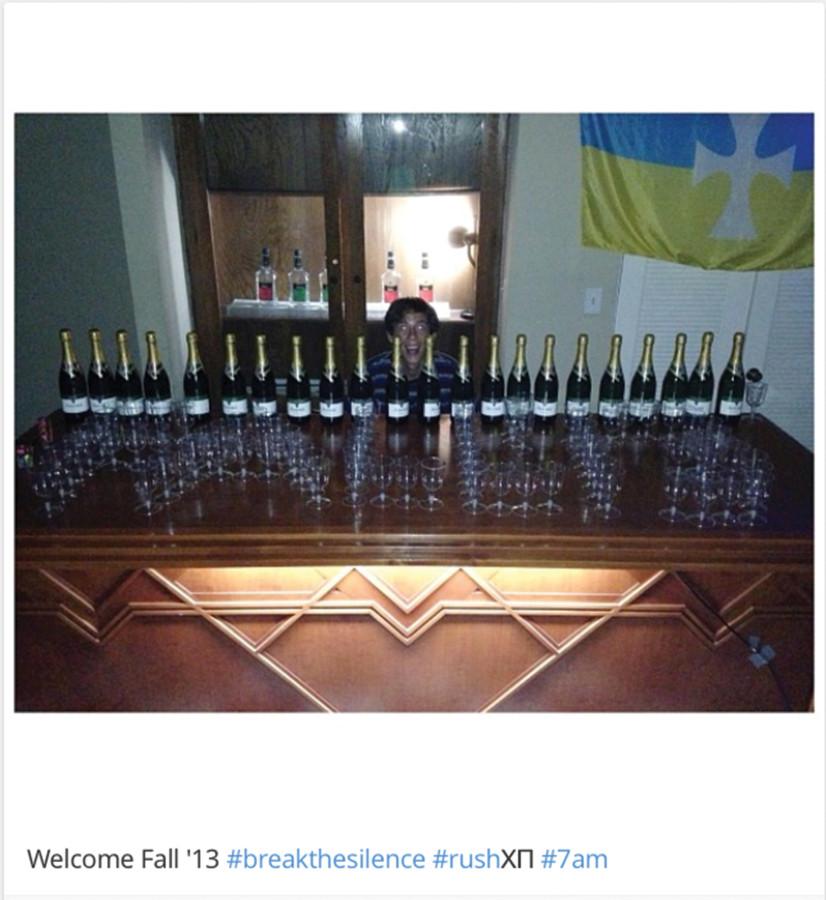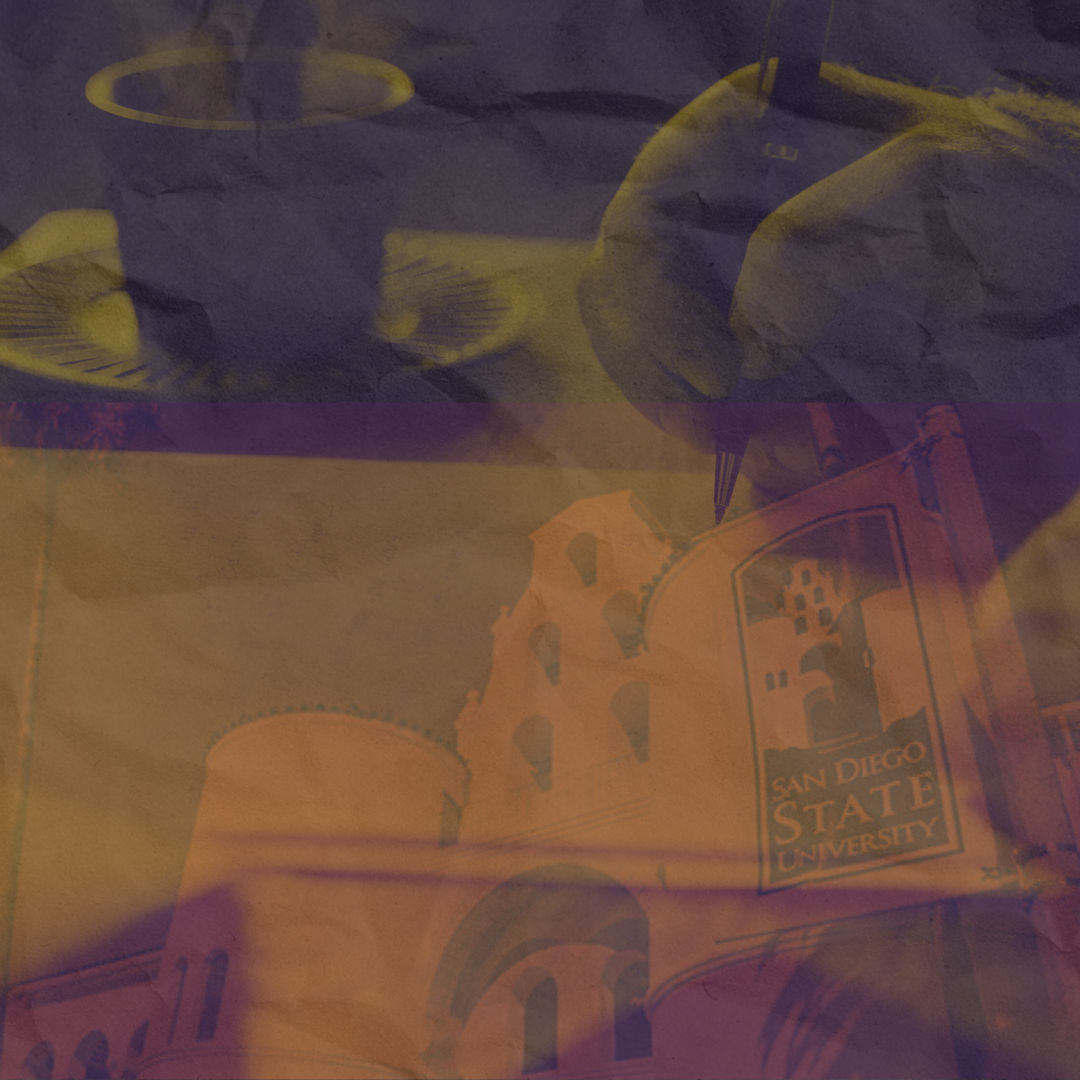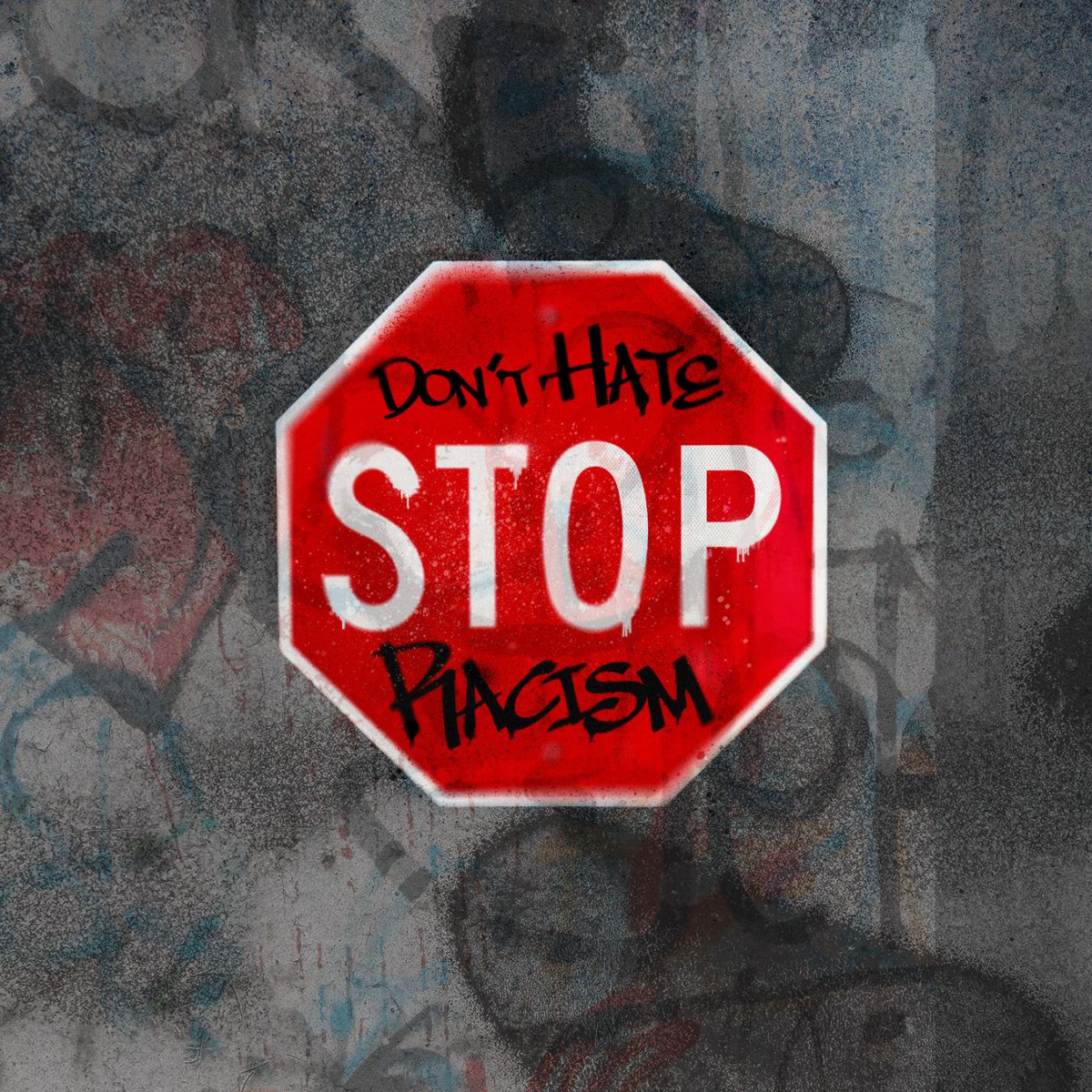Last semester, the San Diego State police reported that 17 sexual assaults occurred near campus. Of those incidents, seven allegedly occurred at fraternity houses, various others took place at local apartments and two reports named the same off-campus house as the purported scene of the crime — a house many students recognize today as “Sigtopia.”
The structure sitting at 5074 College Ave. blends in with its surroundings. With Greek life houses on either side, the two-story, dorm-style building was historically used as a fraternity house, before it was taken over by new residents about three years ago. While all the men who call this place home are not necessarily associated with a recognized fraternity now, that wasn’t always the case.
Sigtopia is mainly inhabited by a group of SDSU men who either belong to an active fraternity or once did, communications senior Tyler Dabovich said. He is a former member of Sigma Chi’s SDSU chapter and said some of the younger members flocked to this house after their fraternity was kicked off campus in 2013 following hazing allegations. They wanted to hold onto the opportunity for a frat house experience, even though living in the actual fraternity house was now out of the question.

“When you’re a fraternity member, the pinnacle is living in the fraternity house with all your bros having a great time,” Dabovich said. “So, a couple of the Fall ‘12s got together and were like ‘Hey, let’s get this house, let’s get as many brothers as we can and get that house’ because they wanted that experience.”
That experience grew in the following years. The sources interviewed for this piece gave widely varied estimates of the amount of rooms in the house. But one of the most conservative estimates is that it holds at least 10 bedrooms, with most tenants doubling up.
In the first year following Sigma Chi’s campus expulsion, Dabovich said only a handful of his brothers moved in, sharing the space with several active Sigma Alpha Epsilon members. But by the fall 2014 semester, Sigma Chi members had taken over and now make up the majority of the house. Sigtopia became a social media geo-located tag, and online pictures of students using #Sigtopia illuminate large theme parties, reminiscent of events by officially recognized fraternities. Some photos publicly advertise for students to “Rush Sigtopia,” with the address listed in the caption.
Dabovich denies that Sigtopia members are engaging in any formal style of recruitment, instead explaining that the housemates just have specific friends who they regularly host events with.
“They’ll pay to put on the parties, the friends, the ‘so-called pledges,’” he said. “They go over there, they pay to party, they’re also friends with the dudes so they go over and hangout and whatnot, and then after the party they come over and help clean up.”
The lack of formal leadership and organization is a key distinction between Sigtopia and a recognized fraternity, Dabovich said. He believes the ability to hold one another accountable is crucial for creating safe environments in a fraternity culture.
“That place isn’t a school’s dream,” he said. “It isn’t a fraternity house’s dream. It’s like that ‘Old School’ house that you can’t really regulate them because they’re not a fraternity, but they’re still partying.”
The Daily Aztec requested to speak with several men who either currently live at the house or once did, but most failed to respond or refused to comment. Jeff Petromilli, an international security junior and former Sigma Chi member, was the only one who agreed to talk about his time living at Sigtopia. He said he transferred away from SDSU this semester, but lived in the house during the fall 2014 semester. Petromilli denied that anyone currently living at the house uses the term “Sigtopia” or that it’s associated with a fraternity.
“It’s a big house but it’s just some friends who live together who used to be in a thing together,” he said. “It’s like a frat house in the sense no one really wants to clean up and you’re just with a bunch of friends but its definitely on a smaller scale and just some guys who live in a house that happened to have had some incidents occur this year.”
Petromilli added that any safety concerns during events at the house are normal for the area that it’s located in. Sometimes people off the street try to come into a party uninvited and get into trouble, and when no one knows who these people are, no one can hold them accountable.
“It’s not the safest areas, things actually do happen,” Petromilli said. “Especially when it’s not the most savory characters going around everywhere. When we have people over, we like to sometimes just let people come in who are local, but in the end now we have to be really careful about that because there’s really bad people in the area.”
Managing accountability
An SDSU student was arrested in connection to one of the two alleged sexual assaults at Sigtopia last December, but the case was recently rejected by the District Attorney’s Office. Since then, no other arrests have been made in relation to either incident.
Several other assaults and a public incident involving fraternity members waving obscene materials at Take Back the Night demonstrators thrust SDSU Greek Life into the media and campus spotlight. In a public announcement, the advocacy organization Concerned Students for San Diego State University called for the immediate suspension of all fraternities until they could be made safe, or a permanent ban if that wasn’t possible.
The idea of punishing fraternities by disbanding them is nothing new. Director of Student Life and Leadership Randy Timm said that for a fraternity to lose its official recognition from the university, it would be due to several incidents of a similar nature. When it comes to a fraternity that may have been partying too much or had any alcohol-related issues, the university first tries to coach the organization back into appropriate behavior by putting temporary restrictions on its social calendar.
“We might say that from this period to this period there’s no parties with alcohol,” Timm said. “Then there’s going to be a time period where you have to register those parties, and it sort of transitions them back into doing it the right way.”
It’s when a fraternity repeats its mistakes that Student Life and Leadership may start the process to revoke its university recognition. When the department decides that point has come, it sends the case to a Judicial Review Board to make the final decision regarding the punishment, Timm said.
But some believe the punishment doesn’t always have its attended effect. Mechanical engineering senior Wesley Episcopo, a member of Sigma Phi Epsilon, has heard of Sigtopia before. He said when he first heard of the house, he wasn’t surprised by its “Animal House” reputation because ex-fraternity members who are released from university oversight sometimes take advantage of their newfound freedom.
“If you kick a fraternity off campus, you’re basically saying you’re done, you’re no more,” Episcopo said. “But then you’ve got 100 plus guys, saying we’ve got absolutely no one holding us back now. Let’s just go to that house down the street, rent it out, build a second floor on it, and there’s just no cure.”
A typical party at a recognized fraternity that still has the support of its national organization has certain safety precautions in order, Episcopo said. At every SigEp party, they have a “risk team” in place consisting of five to eight sober men who keep an eye on things. There are usually people stationed at all entrances to the party, monitoring who comes in and out. Others patrol around inside looking for anyone with health or safety concerns.
The members are on the lookout for anything that can be considered a liability to avoid issues with either their national organizations or the university. Without that pressure, he doesn’t feel as though there would be as much incentive to prioritize safety precautions.
“You wouldn’t feel like anything was required,” Episcopo said.
These safety precautions are usually planned out with a fraternity’s national organization, and then shared with the university, Timm

said. When a fraternity violates its risk-management plan, the university will work with it to find areas for improvement.
“Sometimes I might say ‘So this is what your risk management requires, but it doesn’t sound like in this party you followed it at all,’” Timm said. “So now we’re going to review your risk-management plan, and we’re going to make recommendations or requirements to that risk-management plan moving forward.”
Episcopo believes that although fraternities can still be dangerous environments, these precautions make the best of a tricky situation.
“And that’s why when they accuse fraternities of being at high risk for sexual assault, kicking them off isn’t the answer,” Episcopo said. “Because then it’s just going to move off campus and it’s going to happen even more because no one’s going to work risk, no one’s going to have that structure in line, no one’s going to be accountable for anything.”
Ongoing investigation
Despite these safety precautions, fraternity parties continue to be the location of a large amount of sexual assaults each year. Studies done by the National Association of Student Personnel Administrators found that fraternity men were more likely to commit rape and sorority women were more likely to be victims of rape than their non-Greek counterparts.
In response a tumultuous fall semester, the InterFraternity Council put on a “Sexual Violence Prevention and Awareness Series,” hosting several events meant to spread awareness about gender violence. Additionally, all members of recognized Greek organizations were required to participate in an online, interactive sexual assault awareness and prevention training program.
Those who live at Sigtopia remain outside of the university or a national organization’s oversight.
The International Headquarters of the Sigma Chi Fraternity sent out a press release in early December in response to allegations that former Sigma Chi members were associated with a sexual assault. It explained the office was investigating concerns that “an illegal underground group of students is purporting themselves as a chapter of Sigma Chi,” and said that if proven, “the fraternity intends to pursue all legal remedies afforded to it under applicable law.”
When asked about Sigtopia, Executive Director of Sigma Chi Fraternity Michael Church responded in an email to The Daily Aztec, explaining that “the international fraternity is not currently and does not desire to be associated or affiliated with this group.”
Since it is an off-campus house, the university has no control over its actions either, Timm said. He added that it was the university who called Sigma Chi’s national office to inform them of its concerns.
SDSU’s InterFraternity Council didn’t respond to a request for comment by the time of publication of this piece.
Clarification: The references to “pledges” associated with Sigtopia came from social media mentions.















